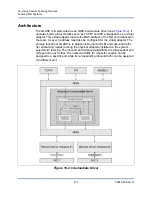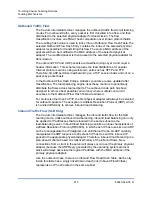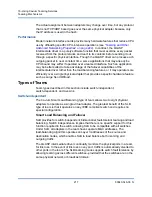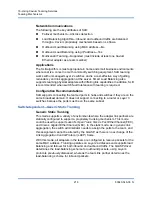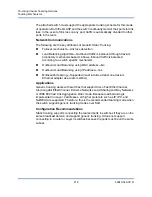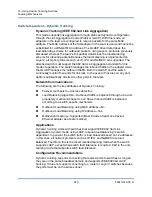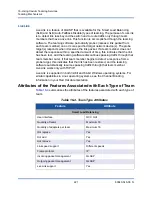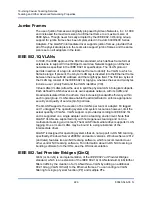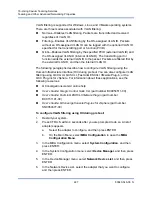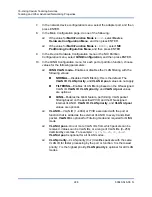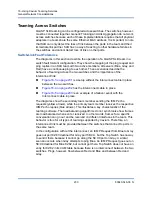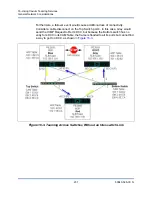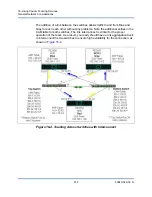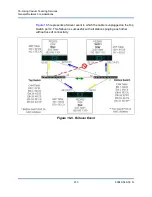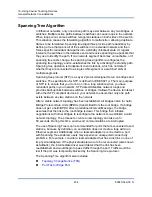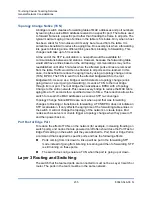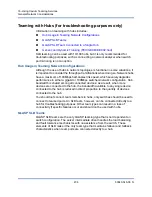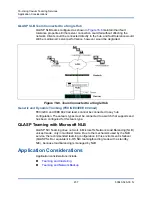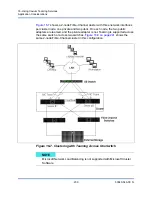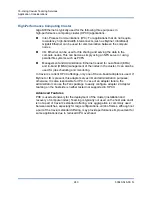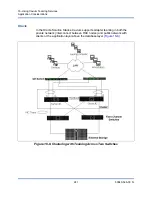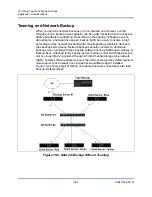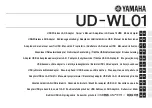
16–Using Cavium Teaming Services
Teaming and Other Advanced Networking Properties
228
83840-546-00 N
7.
In the network device configuration menu, select the adapter port, and then
press ENTER.
8.
In the Main Configuration page, do one of the following:
If the value for
Multi-Function Mode
is
<SF>
, select
Device
Hardware Configuration Menu
, and then press ENTER.
If the value for
Multi-Function Mode
is
<NPAR>
, select
NIC
Partitioning Configuration Menu
, and then press ENTER.
9.
In the Device Hardware Configuration menu or the NIC Partition
Configuration menu, select
QINQ Configuration
, and then press ENTER.
10. In the QINQ Configuration menu, for each port or partition function, choose
values for the following parameters:
QINQ VLAN mode
—Enables or disables the VLAN filtering with the
following values:
NORMAL
—Disables VLAN filtering; this is the default. The
VLAN ID
,
VLAN priority
, and
VLAN id pool
values do not apply.
FILTERING
—Enables VLAN filtering based on the OS-assigned
VLAN ID.
VLAN ID
,
VLAN priority
, and
VLAN id pool
values
are optional.
QINQ
—Enables the QinQ feature, performing VLAN packet
filtering based on the specified PVID and the OS-assigned
internal VLAN ID.
VLAN ID
,
VLAN priority
, and
VLAN id pool
values are optional.
VLAN ID
—VLAN ID (1–4094) or PVID associated with the port or
function that is added as the external VLAN ID to every transmitted
packet.
VLAN ID
is optional for Filtering mode and required for QINQ
mode.
VLAN id pool
—One or more VLAN IDs from which packets can be
received. Values can be VLAN IDs or a range of VLAN IDs (0–256)
delimited by commas. For example:
10,15,16-25,30,35-45
.
VLAN id pool
is optional for all VLAN modes.
VLAN priority
—VLAN priority (0–7) identifies packets with the same
VLAN ID for faster processing by the port or function. 0 is the lowest
priority; 7 is the highest priority.
VLAN priority
is optional for all VLAN
modes.

